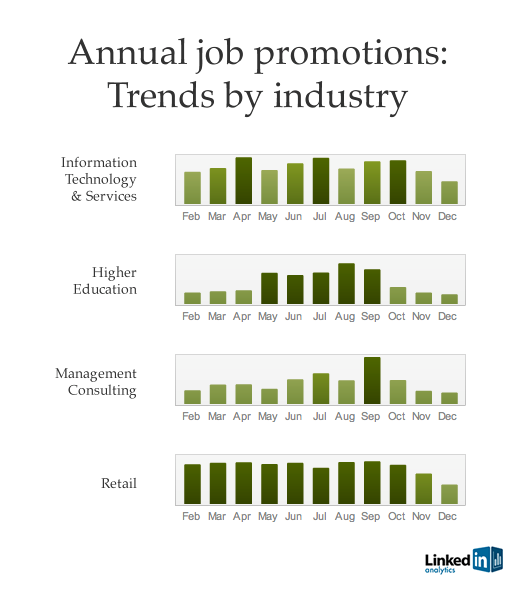
The digital world is rapidly opening up different ways marketers can interact with their customers. You’ve heard terms like “brand evangelists” and “tapping into social graphs,” but how do these terms apply to you and your company? Due to its pace and newness, this new wave of marketing can feel like an overwhelming tsunami of variables.
To catch the early breaks and make the most out of your experience, we hooked up with Extole, a leading provider of social engagement applications that drive measurable results on and off Facebook for leading brands and agencies. Extole’s multi-channel Engagement Platform helps marketers activate their customer base, engage fans, and convert social engagement into Likes, recommendations, sales, customers, and prospects. We interviewed Greg Brown, Chief Revenue Officer for Extole on how to turn your customers into social marketers.
CBM: How do you define social engagement marketing and why does it matter?
Extole’s Greg Brown: Everyone knows there’s power in social media – in fact, in 2011, 70% of marketers planned to increase their social media budget by more than 10% for the year. It’s tempting to associate social marketing with getting a company’s brand statement plastered all over Facebook and Twitter.
What’s unique about social engagement marketing is that it doesn’t just include the new, shiny objects of Tweeting and Liking but also builds off of the time-proven practice of friend referral marketing. It looks at what kinds of conversations customers are having with their friends and where they are having them, and then uses this information to turn customers into social marketers to drive ROI. And this may not even be on Facebook. A large amount of customers are still sharing stories and recommendations with one another via email, IM, blogs, and offline.
The summary, then, is that social engagement marketing differs from other social marketing approaches in its comprehensiveness: rather than just implementing point solutions on Facebook, for example, it looks at all the conversations your customers are having – and the impact they are making – to foster more recommendations across these channels.
CBM: What are the top tools every marketer should have in their social toolbox and why?
Extole: To get the most return out of their marketing efforts, marketers should be adopting the following tools supporting 3 key objectives:
1. Activating their existing customer base around their brand. Lots of marketers entering the social marketing fray are sitting on vast assets of customer data – email addresses, CRM data and more – and should put this to work in their social efforts. Tools that support this include:
· Referral programs which offer their existing customers rewards for introducing their friends and extended networks to the brand.
· Contests such as sweepstakes which take a different approach to rewarding customers who share the brand
 2. Engaging their customers and prospects with reasons to connect to the brand. Once customers and friends are exposed to the brand, their value increases as they continue to connect with it. Tools that provide meaningful ways for brands to get the most out of its customers (and vice versa) include:
2. Engaging their customers and prospects with reasons to connect to the brand. Once customers and friends are exposed to the brand, their value increases as they continue to connect with it. Tools that provide meaningful ways for brands to get the most out of its customers (and vice versa) include:
· Polls
· Contests
· Competitions
3. Converting their customers and prospects into revenue-generating activities. Social activities aren’t limited to sharing, posting and liking; they also involve things such as:
· Group Buys
· Couponing
· Enhanced Referral Programs
…and other commerce applications which directly impact the ROI for brands.
Interestingly we’re finding that, while many Do-It-Yourself tools are emerging in the market in each category, the best results come from complementary services that advise brands on designing the right kinds of solutions that suit their particular objectives – and customer base – best.
CBM: What are the common mistakes marketers make in adopting these tools and/or conversely, how can they use them to their full advantage?
Extole: A common mistake follows from the last point above. That is, the first mistake we commonly observe centers on failure to really look at a brand’s particular customer dynamics. Which channels should it focus on when encouraging social sharing? What messages resonate best with its customer base? Too many brands are slapping up solutions without thinking through the ways to maximize their impact.
A second mistake involves not getting the best bang for the engagement buck. A common refrain among marketers is to “increase Facebook likes.” But this leaves an enormous asset of theirs on the table. For example, a leading fashion brand had 1.5M customers visiting its website, and over 1M emails in its database. But when they initially explored social media, they left these out of the equation, focusing solely on its 25K Facebook fans. Why not bring its existing customers into the mix?
A third mistake we see entails applying analytics properly. One of the most common mistakes we see is when marketers treat social marketing as discrete, stand-alone silo with a unique set of metrics, rather than an infrastructure that fuels all of their existing marketing efforts. This ties into the metrics: whatever metrics they are employing for their other programs – sales, conversions, engagement, loyalty – should be lifted by their social efforts.
 CBM: How should ROI of social engagement programs be measured? Any examples?
CBM: How should ROI of social engagement programs be measured? Any examples?
Extole: Rather than introducing an opaque set of distinct metrics, social engagement programs should drive ROI results that are familiar to marketers: increased sales, conversions and revenues net of costs.
The good news is that smart social engagement yields very good ROI. Some examples of how our referral programs deliver include:
· Email open rates three times higher than general marketing emails (60% of friends open an email from a friend vs. 20% from a brand)
· Email CTRs of 56% compared to cross-vertical average CTRs of just 7%
· A 25% lift in click-to-conversion (when comparing multiple clients’ usual traffic with our social engagement traffic)
· 1.5-2X customer value from our customers vs. industry averages
CBM: How has the social graph empowered consumers? How can a company turn their customers into evangelists leveraging social technologies?
Extole: The social graph has provided consumers with an unprecedented degree of transparency and trust. Studies show friends have always been a far more trusted source than brands (Nielsen studies show that 90% of consumers trust friends vs. 14% trust mass advertising). And the social graph gives them insight into what their friends are saying about products and services via just a few clicks vs. very inefficiently reaching out ad hoc to their friends.
LinkedIn is a great example of this: in the pre-social graph days, a hiring manager had to reach out to get anecdotal information on whether to “buy” (hire) an employee. No longer must the hiring manager rely on the candidate to provide objective references, as the LinkedIn social graph can instantly display which contacts can provide firsthand insight into the candidate. The same process applies to products and services consumers wish to buy: they can go to the brand Facebook page, see which friends are followers, and discuss the brand among their trusted network. This is one of many scenarios that provide significant transparency into the purchase process for consumers, thanks to the social graph.
Companies that use this to their advantage are ones that motivate, encourage and engage their customers to become advocates. For example, our customer Roku leveraged social graph information and discovered a great deal of overlap between Netflix fans and its own fans; it acted upon this information to provide free Netflix offers to its customers who referred their friends to their service. This demonstrated that the brand was “listening” to its customers and providing them with meaningful reasons to engage that brand with their friends.
*For more on this topic from our social media channel, we think you’ll enjoy:
Humanizing Brands with Social Media: An Interview with Benjamin Palmer
Best practices for social media savvy brands: Interview with Actionly
6 Social Media Savvy Brands + What They Do Right
*In what ways have you been able to turn your customers into social marketers? Share in the comments below!
Get the TNW newsletter
Get the most important tech news in your inbox each week.





